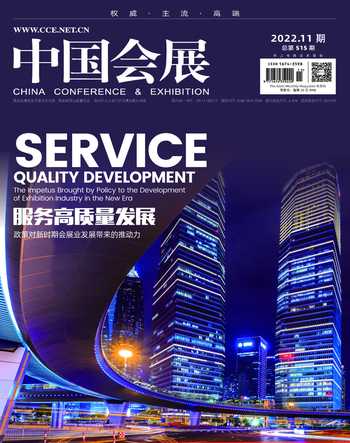Implement"new mission"
Alan
Recently, this epidemic situation has been effectively brought under control throughout the country, under the guidance of the central committees dynamic zero-COVID policy and strategies to tackle both imported and domestic infections. At the same time, after three years of repeated epidemic outbreaks, various cities have gained a new understanding of the epidemic prevention and control, and have given birth to the thinking of building the emergency management center and centralized quarantine site. According to the requirements of The Joint Prevention and Control Mechanism of the State Council, the emergency center should have the admission capacity and be able to ensure the living standard to solve emergencies. Among them, building layout and design renovation plan especially in the exhibition center steps into peoples vision.
In the passt few days, Guangming Net fi rst announced that Sanhe, Hebei province, will build an emergency management center, and then the Henan province government also revealed that Shangqiu, Henan province, will spend 135 million yuan on the permanent?cabin hospital, which aroused a wide-ranging discussion and quickly became the trending topics on Weibo?.In my opinion, this approach is not done once and for all. As a journalist who focus on the exhibition industry, the news inspired me and lead me to consideration.
This year, nearly 50 percent of the countrys 33 mobile cabin hospitals were rebuilt from exhibition centers. The Joint Prevention and Control Mechanism of the State Council required that every province have its own mobile cabin hospitals at the press conference. It shows that the epidemic situation has brought such a demand for mobile cabin hospitals. Converting the exhibition centers into “cabins” is a better choice.
Actually, whenever the city encountered huge disasters, the exhibition center always plays the role of temporary "fi re captain", fi ghting in the fi rst line and solving emergencies. Over time, whether the convention and exhibition centers could add some new couple of features to meet the needs of urban emergency management has come into focus.
As?far?as?the?status?of?reality?is?concerned, exhibition venues in China have certain congenital conditions in solving city crises now. Therefore, exhibition venues always play a big role of peoples livelihood security in?the?face?of?the?storm. It is good for exhibition venues to add more emergency management functions, and realize the normalization. .
First, it?is?great?in?number?and?wide?in?distribution. During?the??economic?development, venues offer a platform for economic and trade development. In case of emergencies, also these venues can be transformed into local emergency management centers at any time to settle the victims.
Second, it is intelligent and manageable. In recent years, Chinas exhibition venues have transformed into digitization and?intelligence.The venue has a functional management system, which is convenient for management in a critical moment.
Third, it reduce costs and increase effi ciency. Although the recent news reports have been focused on building emergency centers, some people have suggested that the high cost of rebuilding sites not only increases the local fi nancial pressure, but also reduces the utilization rate of urban infrastructure. After all, big disasters do not happen normally, there will be a waste of limited resources. To this end, rebuilding exhibition venues, adding the emergency function, and combining the exhibition venues and the emergency center together, will yield twice the result with half the effort, not only economizing the local fi nancial expenditure, but also improving the utilization rate of urban infrastructure.
"In the past three years exhibition venues plays a key role of assisting the government in epidemic prevention and control, which shows that its able to meet the need of a city emergency management." In my opinion, its necessary for exhibition venues to achieve functional normalization. This shift of exhibition venues not only plays a good supplement to the existing urban emergency management resources, but also gives the exhibition venues a new mission.

